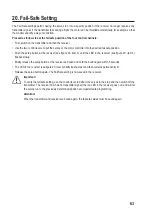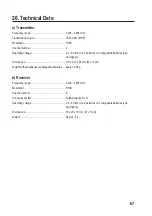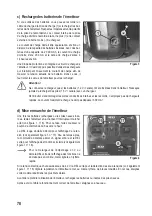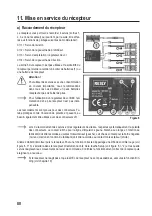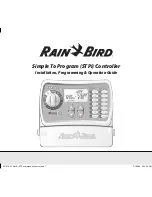
66
25. Troubleshooting
Even though the remote control system was built to the state of the art, there can still be interference or faults. For this
reason, we would like to give you some information on how to deal with possible problems.
Problem
Remedy
Transmitter doesn’t respond.
•
Check the batteries or rechargeable batteries in the remote control.
•
Check the polarity of the batteries.
•
Check the on/off switch.
•
Perform binding again.
Transmitter switches off on its own
at once or after a short period.
•
Check the batteries in the remote control or replace them.
Receiver does not react.
•
Check the power supply to the receiver.
•
Check connectors on the receiver.
•
Bind the receiver to the transmitter again.
The range of the system is very
short.
•
Check batteries in the remote control and the receiver.
•
Align transmitter aerial diagonally to the model.
•
Install the receiver aerial in a different position in the model for test pur-
poses.
The servos do not respond.
•
Check the transmitter function.
•
Check the batteries in the receiver.
•
Test the switch cable.
•
Test the BEC function of the controller.
•
Check the polarity of the servo connector.
•
Perform binding again.
The servos vibrate.
•
Check batteries in the remote control and the receiver.
•
Check connectors on the receiver.
•
Remove moisture in the receiver with a hair dryer in case it has gotten wet.
•
Check the receiver aerial for damage.
•
Reorient the receiver aerials in the model for test purposes.
One servo is humming.
•
Check the batteries in the receiver.
•
Make sure the linkage rods run smoothly.
•
Operate the servo without the servo arm for test purposes.
Summary of Contents for Phoenix Plus
Page 134: ...134 ...
Page 135: ...135 ...












